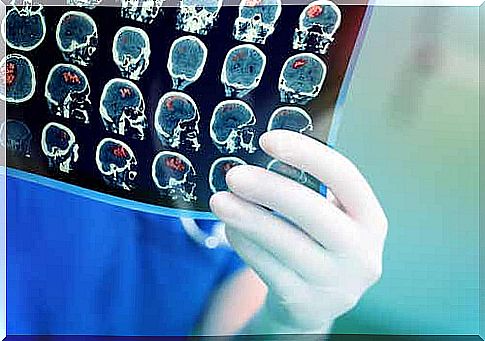Hemorrhagic Stroke: What Is The Risk?

A hemorrhagic stroke is one of the leading causes of death and disability worldwide. Prevention and early diagnosis are very important to avoid the consequences. Here are some interesting facts about them.
What is a hemorrhagic stroke?
A stroke is when the blood flow suddenly stops in an area of the brain. It can occur due to blockage of a cerebral artery or vein, which will be called an ischemic stroke, or due to rupture of a blood vessel.
It is this case of a rupture of a vessel known as hemorrhagic stroke. Hemorrhagic strokes account for only 10-15% of all strokes that occur. The damaged blood vessel begins to bleed and produces a cerebral hemorrhage, and the area after the fracture, which received blood and was nourished by this blood vessel, is left without water supply.
The fact that an area of the brain is left without a water supply causes all the cells in this tissue to begin to lack oxygen, lose function and eventually die. In addition, the bleeding itself affects other areas of the brain, which also puts these cells at risk.
This is why the longer an area is without blood supply, the more severe the consequences will be. So it is very important to know how to quickly recognize the symptoms that can cause a stroke, to act accordingly and minimize the risk of its consequences.
Strokes are emergencies where the health service follows an action protocol. The goal is to diagnose and treat it as soon as possible to avoid serious consequences and even the death of the patient.

What are its symptoms?
The symptoms of a stroke may occur gradually, but they usually occur suddenly and worsen rapidly. Some of them are:
- Weakness in a body part or loss of the ability to move it.
- Numbness or a tingling sensation.
- Reduction or loss of total or partial vision.
- Problems talking.
- Inability to recognize or identify known things.
- Sudden, violent headache.
- Dizziness.
- Loss of coordination.
- Difficulty swallowing.
- Sleepiness, drowsiness and even coma.
- Confusion or memory loss.
Risk factors for hemorrhagic stroke
A hemorrhagic stroke most often occurs in people with damaged blood vessels. There are risk factors that will be permanent and others that will depend on the person’s lifestyle. Some of the factors that can increase the risk of cerebral hemorrhage are, for example:
- Malformations in the blood vessels of the brain, such as cerebral aneurysms or arteriovenous malformations. These disorders make the vessels more delicate and more prone to rupture.
- Arterial hypertension. People with uncontrolled arterial hypertension are at greater risk of a vessel rupturing as they support greater pressure on their walls due to the blood they contain.
- Smoking. Smoking causes the walls of the blood vessel to lose elasticity, making them more susceptible to rupture with any change.
- Diabetes. People with diabetes also have damaged and weakened blood vessels.
- Unhealthy diet, overweight and obesity.
As you can see, many of these factors can change with a healthy lifestyle. In addition, doctors advise people to exercise physically and follow a controlled diet with regard to fats, alcohol and other harmful substances.

One must act quickly in case of hemorrhagic stroke
Stroke is one of the leading causes of death, especially in developed countries. It is also a major cause of acquired disability. As we have already said, it is very important to recognize the signs of a stroke as soon as possible in order to act quickly and avoid its consequences.
When treated quickly, even if some of the tissue is dead, other tissue can recover. With rehabilitation, many of the lost functions return to normal. It is therefore important to notify the healthcare system when you suspect a stroke. Finally, take care of yourself and pay attention!









